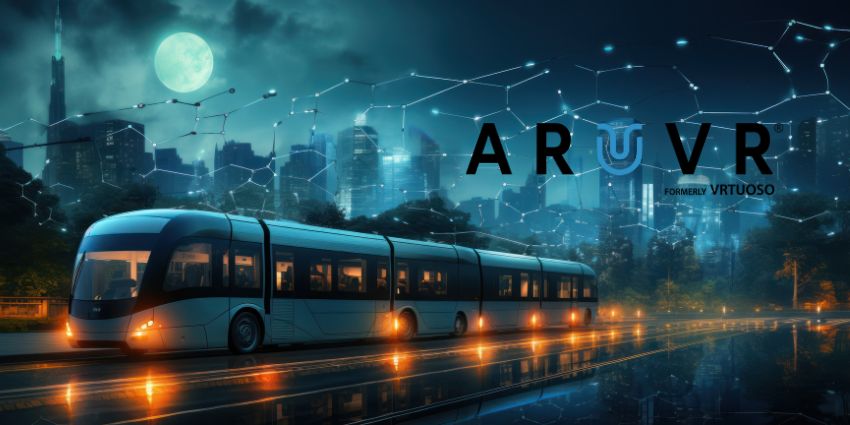Spatial computing technology has played a role in the evolving XR and digital landscapes for some time. However, hype around the concept has recently increased, thanks to companies like Apple promoting their new “spatial computing system”: the Vision Pro.
Though still a relatively misunderstood concept, spatial computing has the power to shape the future of human and technology interaction. The term “spatial computing” refers to the wide variety of solutions that allow people to interact with computer systems in a more immersive format.
With spatial solutions, such as haptic feedback and computer vision, companies empower users to interact with digital content and tools like never before. If you’re interested in a future where computers and humans can work together synergistically, here are some reasons to consider investing in spatial tech.
The Reasons to Invest in Spatial Computing Technology
While it’s easy to see spatial computing as just another term for “extended reality,” the concept is much broader than you’d think. Spatial computing technology bridges the gaps between intelligent technologies, from IoT and digital twins to the metaverse, AI, and automation. This technology is currently growing in popularity at a CAGR of 20.4%.
1. Spatial Computing Technology Enhances User Experience
Perhaps the most apparent benefit of spatial computing technology is the ability to improve our experiences with computers and digital systems. With spatial technologies, users won’t have to rely on computer keyboards and XR controllers to convey instructions to machines.
Instead, we can navigate virtual and augmented environments using gestures and eye movements. We can use IoT sensors and tools to stream information directly to computer systems. We can even touch and interact with digital content, thanks to haptic feedback.
All of this leads to a more natural, organic experience whenever we interact with new technologies. In the business world, employees can interact with software and content intuitively, with minimal need for extra hardware. In the consumer world, we’ll discover a new variety of products designed to make us safer and more productive. For instance, spatial computing is one of the core concepts driving the development of autonomous cars.
2. Spatial Solutions Will Transform Education
Technologies linked to spatial computing, such as extended reality and artificial intelligence, are already impacting how we share and develop knowledge. Companies in every industry are beginning to embrace XR training landscapes. These environments allow businesses to create realistic simulations of scenarios for a more interactive, immersive learning experience.
Advancements in spatial computing technology will only make simulated training and education more impressive. They’ll allow people to practice actions, like performing surgery or repairing a machine, without using buttons and controllers. This promotes the development of muscle memories.
Spatial computing solutions can create adaptive learning paths for students, adjusting content based on an individual’s progress and skill level. With integrated tools for communication and AI, companies can even provide feedback to employees in real-time as they learn.
3. Spatial Computing Drives Productivity and Innovation
Like extended reality, the capabilities of spatial computing are quickly capturing the attention of businesses looking to innovate and evolve. Already, companies in the industrial and manufacturing landscape are using 3D visualization and digital twins to enhance product design strategies. With these tools, companies can experiment with new concepts without limitations.
In the manufacturing world, spatial computing systems can also help bridge the gaps between various systems, people, and processes. For instance, a worker can program a robotic arm using an AR interface and then use tools to control the technology from a distance remotely.
Spatial solutions can even utilize IoT, AI, and automation, allowing companies to rapidly fix problems with machinery, implement repairs, or mitigate issues. These solutions pave the way to a more productive and efficient workforce where machines and humans work collaboratively.
4. Spatial Tools Transform Immersive Collaboration
The rise of new, more affordable, and accessible XR technologies has paved the way for a future of immersive collaboration. Even as businesses drive employees back into the traditional workplace, there’s still a need to bridge the gap between various workers. Hybrid, remote, field, and global employees need to be able to connect in an environment that facilitates collaboration.
Spatial computing technology can help to immerse team members in a more productive environment for a range of tasks. Companies can place employees in a virtual environment where everyone can interact with products, work together on creative ideas, and share knowledge.
Spatial solutions can also provide employees on the move with access to support from subject matter experts and supervisors. Innovative tools, like the Qualcomm spatial computing platforms, can merge physical and digital environments in real time. Teams could even use these tools to train and onboard new employees working in the field.
5. Spatial Computing Technology will Upgrade Customer Service
Finally, investing in spatial computing technology can help businesses in all industries to deliver a new level of customer support and service. In the retail landscape, spatial computing allows companies to support customers through their sales journey, offering personalized insights. Brands can even offer immersive onboarding sessions and teach users how to use new products.
In the tourism and hospitality industries, spatial computing solutions can provide helpful information and context to consumers. For instance, museums could augment physical environments with information about each display’s history and origins.
Even in the healthcare landscape, spatial technologies are changing how professionals serve and support patients. Surgeons embrace extended reality and spatial computing technologies to visualize complex patient anatomies, plan surgical procedures, or deliver remote guidance.
Investing in the Future of Spatial Computing Technology
While spatial computing technology isn’t an entirely new concept in the tech world, it’s currently making waves. Transformations in AI, connectivity solutions, and extended reality have paved the way for a new generation of spatial computing opportunities.
Used correctly, spatial solutions can shape the future of the metaverse, digital experiences, and even the modern workforce.







